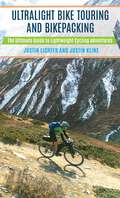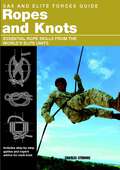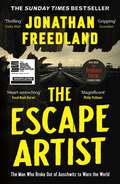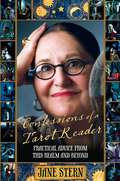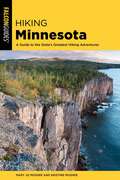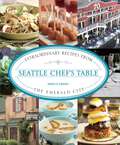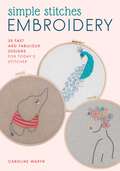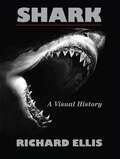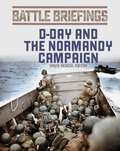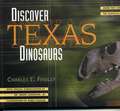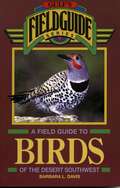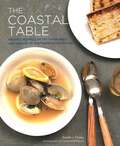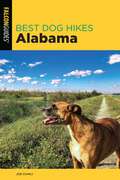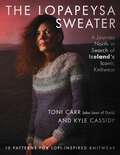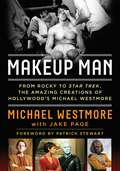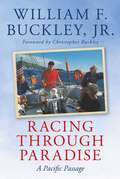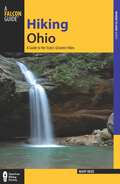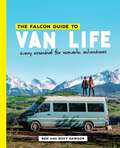- Table View
- List View
Ultralight Bike Touring and Bikepacking: The Ultimate Guide to Lightweight Cycling Adventures
by Justin Lichter Justin KlineWritten by experts Justin Lichter and Justin Kline, Ultralight Bike Touring and Bikepacking is a detailed guide to ultralight, self-contained cycling trips for pleasure and adventure. Bike tours can last a single day or take weeks, months, and years - this guide will explain the basics and intricacies no matter how far you go. Whether you are a beginner or a veteran, this is the most comprehensive book yet on traveling further and lighter.
SAS and Elite Forces Guide Ropes and Knots: Essential Rope Skills From The World's Elite Units (SAS)
by Alexander StilwellA simple rope can be a lifesaver in a survival situation. Knowing how to use a rope and make effective knots will help you in an amazing variety of ways – from constructing shelters and creating weapons, to fishing and hunting. Most important, ropes and knots act as lifelines in dangerous environments, such as when crossing a fast-flowing river or scaling a mountainside. Elite Forces Guide to Using Ropes and Knots draws on the skills of the world’s best soldiers to teach you how to use these essential tools in the wilderness. Tried and tested techniques used by the world’s special forces give you expert advice on issues such as: how to take care of ropes, the most useful knots to use in a survival situation, how to make your own ropes out of animal tendons or plants, how to use your rope effectively when climbing, how to lash together a log raft or a shelter.Including more than 300 black-and-white specially-commissioned illustrations, Elite Forces Guide to Using Ropes and Knots is easy to understand, packed with expert advice and essential for anyone who wants to know the difference between and how to make a simple reef knot or complex slip knot, a clove hitch, an alpine butterfly knot and many more.
The Escape Artist: The Man Who Broke Out of Auschwitz to Warn the World
by Jonathan FreedlandTHE NEW BOOK THE TRAITORS CIRCLE COMING SOON FROM JONATHAN FREEDLANDSHORTLISTED FOR THE BAILLIE GIFFORD PRIZE, RATHBONES FOLIO PRIZE, WATERSTONES BOOK OF THE YEAR AND LONGLISTED FOR THE WINGATE LITERARY PRIZEA MAIL ON SUNDAY, THE TIMES, THE ECONOMIST, GUARDIAN, THE SPECTATOR, TIME, AND DAILY EXPRESS/DAILY MIRROR BOOK OF THE YEAR'Thrilling' Daily Mail'Gripping' Guardian'Heartwrenching' Yuval Noah Harari'Magnificent' Philip Pullman'Excellent' Sunday Times'Inspiring' Daily Mail'An immediate classic' Antony Beevor'Awe-inspiring' Simon Sebag Montefiore'Shattering' Simon Schama'Utterly compelling' Philippe Sands'A must-read' Emily Maitlis'Indispensable' Howard JacobsonApril 1944. Nineteen-year-old Rudolf Vrba and fellow inmate Fred Wetzler became two of the very first Jews to successfully escape Auschwitz. Evading the thousands of SS men hunting them, Vrba and Wetzler made the perilous journey on foot across Nazi-occupied Poland.Their mission: to reveal to the world the truth of the Holocaust.Vrba's unique testimony would save some 200,000 lives.But he kept on running - from his past, from his home country, his adopted country, even from his own name. Now, at last, Rudolf Vrba's heroism can be known.
Everybody Needs a Hideaway
by Dean BennettA charming story about a boy who has a special tree house in the forest, where he and his golden retriever watch the creatures that share the forest and marsh below. Bennett's soft, textured illustrations enchance his story, which is based on his own childhood experiences.
Confessions of a Tarot Reader: Practical Advice From This Realm And Beyond
by Jane SternTarot cards have been used to foretell the future for centuries. Once the domain of the esoteric and mystical, tarot today has many practical applications in the modern world. Jane Stern, a fourth generation tarot reader perhaps best known for Roadfood, has given the art of the tarot a very modern spin. Using the twenty-two major arcana cards (the “heart of the tarot”) as chapters, she has gleaned all she has learned over the years and presents Confessions of a Tarot Reader as a witty, readable, and useful self-help book. In her own words, the author likes to think of herself as a “psychic Dear Abby,” and by drawing on the wisdom of the tarot deck, to give practical advice in every life situation and lift the veil between this world and the unseen beyond.
Best Hikes Houston: The Greatest Views, Wildlife, and Forest Strolls (Best Hikes Near Series)
by Keith StelterWho says you have to travel far from home to go on a great hike? In Best Hikes Houston, author Matt Forster details the best hikes within an hour's drive of the greater Houston area perfect for the urban and suburbanite hard-pressed to find great outdoor activities close to home. Each featured hike includes detailed hike specs, a brief hike description, trailhead location, directional cues, and a detailed map.
Savannah Food Crawls: Touring the Neighborhoods One Bite and Libation at a Time (Food Crawls)
by Jesse BlancoSavannah Food Crawls is an exciting culinary tour through on of Georgia's most beautiful cities. Each crawl is the complete recipe for the perfect tourist day, a new way to experience your own city, or simply food porn and great stories to enjoy from home. Put on your walking shoes and your stretchy pants, and dig into Savannah one dish at a time.
Knits for Teens: 16 Contemporary Designs in Cascade Yarns for Junior Sizes 3 to 15
by Lee GantTeens have a unique fashion outlook, prizing both comfort and style, and the 16 pieces in this knitwear collection meet those high standards. The sweaters, jackets, dresses, tops, and skirts are all easy to wear, versatile pieces that will become instant favorites. A size range from Juniors 3 to 15 ensure a great fit for most teens. With lots of photos, the book looks like a magazine fashion spread--let your teen make their selections and then personalize with color choice. All pieces are knit in Cascade Yarns, which have dozens of colors to choose from. Enjoy knitting something your teen will love--or maybe even teach her to knit it herself!
Hiking Minnesota: A Guide to the State's Greatest Hiking Adventures (State Hiking Guides Series)
by Mary Jo Mosher Kristine MosherThe classic guide to hiking the Land of 10,000 Lakes, now updated and in full color!View the spectacular waterfalls, gorges, and canyons of the nationally known Superior Hiking Trail, step back into Native American history alongside the quarries of Pipestone National Monument, or see bald eagles and other wildlife in Bear Head Lake State Park. Highlighting the history and geography of each route, this book introduces more than forty of the finest trails the Gopher State has to offer.Each featured hike includes detailed hike specs and descriptions, trailhead location, mile-by-mile directional cues, gorgeous full-color photography, and a detailed map.
Seattle Chef's Table: Extraordinary Recipes from the Emerald City (Chef's Table)
by James FraioliCelebrating Seattle&’s best restaurants and eateries with recipes and photographsHot chefs are setting the Seattle restaurant scene ablaze. With innovative ideas and culinary surprises, the city&’s most heralded restaurants and eateries continue adding spark to an already sizzling food scene. From James Beard winners Holly Smith and Maria Hines to Chris Mills, who competed on the original Japanese Iron Chef in Tokyo, and restaurants like Volterra, which Rachael Ray named one of her &“favorite restaurants in the world,&” the Emerald City is filled with celebrity chefs, heralded restaurants, and Food Network star eateries that serve up delicious cuisine to locals and tourists. Seattle Chef&’s Table is the first cookbook to gather Seattle&’s best chefs and restaurants under one cover. Profiling signature &“at home&” recipes from almost fifty legendary dining establishments, the book is also a celebration of the growing sustainable food movement in the Pacific Northwest. With full-color photos throughout highlighting fabulous dishes, famous chefs, and Seattle landmarks, it is the ideal ode to the city&’s coveted food culture and atmosphere.
Simple Stitches Embroidery: 39 fast and fabulous designs for today's stitcher
by Caroline WarynAll you need to know to start embroidering and complete your first project fast!Simple Stitches Embroidery teaches the basics of embroidery, from materials and techniques to the most popular stitches. All stitches are illustrated and explained, and patterns and instructions are included for 39 embroidered pieces in popular styles and colors. From adorable elephants for the nursery to cacti for the office and llamas for anywhere, the designs in this book are all easy enough for the beginner. Step-by-step instructions walk you through each project. Finish your pieces as wall hangings right in their hoop, or make small pins or embellishments.Whether you are a beginner or more experienced needleworker, the refreshing and delightful designs in this book are sure to bring many happy hours of stitching!
Shark: A Visual History
by Richard Ellis“The sharks, ancient or modern, real or imaginary, have always been with us, and will probably remain with us forever. They appear not only in movies and literature, but in countless permutations of size, shape, and materials, permeating our daily lives with their silent menace. In a sense, humans live in a world replete with sharks, not vice-versa.” Thus Richard Ellis sets about chronicling and debunking the myths of sharks throughout history. From 18th century art to the phenomena of JAWS, “the shark” has remained the indomitable aggressor of the deep, the last demon of humankind. The image of the shark and the fear it inspires infiltrates our daily lives with its mythical power and strength. But it is not man who should fear the shark. Our need to dominate these predators is destroying them and their habitat. Through hundreds of full-color images Ellis proves the necessity of preserving these majestic creatures. As curator of the Ft. Lauderdale Museum of Art’s exhibition entitled “Shark”, debuting May 2012, Ellis adeptly turns these sleek, efficient hunters from monsters of the deep into rare, beautiful forces of nature.
D-Day and the Normandy Campaign (Battle Briefings)
Stackpole&’s Battle Briefings series offers accessible and insightful summaries of battles, commanders, and other military history topics. This inaugural installment features one of World War II&’s most pivotal campaigns: D-Day and the battle for Normandy that followed. It begins with Allied plans for the beachhead assault and Rommel&’s construction of German defenses, but the book&’s heart is the fighting as seen from both sides, from the Rangers at Pointe du Hoc and the landing at Omaha Beach to hedgerow combat, the air war, and clashes of Shermans and panzers.
Discover Texas Dinosaurs: Where They Lived, How They Lived, and the Scientists Who Study Them
by Charles E. Finsley Wann LangstonThrough photos and narrative, some of Texas' most dedicated scientists show you actual specimens of dinosaur material found in Texas, as well as dinosaur exhibits found throughout the state.
A Field Guide to Birds of the Desert Southwest
by Barbara L. DavisThis field guide takes you to the desert and grassland areas of Arizona, California, and New Mexico where the total number of bird species reaches a staggering 440. Included are 21 desert birding hot spots, in-depth descriptions and behavioral information, 8 bird charts, and much more.
Coastal Table: Recipes Inspired by the Farmlands and Seaside of Southern New England
by Karen CoveyWhen Karen Covey moved to the South Coast of Massachusetts, she found an exceptional community of farmers, winemakers, chefs, cheesemakers, and fishermen thriving upon the region s unique coastal geography, quietly producing some of the best food in the Northeast. Until recently, though, few outside the culinary world have discovered the breadth and caliber of ingredients available from the coastline of Southern New England. That s about to change. Using her adopted region as inspiration, Covey captures seaside living in New England at its freshest and most innovative. With more than 120 recipes, including several from some of the area s most notable chefs, this book shows us how to savor the spectacular food and flavors coming from the region. The Coastal Table is filled with ideas for casual beach days, sophisticated outdoor entertaining, and simple, everyday meals that celebrate the epicurean heritage of this remarkable coastal region. This is the book for the home cook who yearns for the seaside and its flavors all year round.
Best Bike Rides Boston: Great Recreational Rides in the Metro Area (Best Bike Rides Series)
by Shawn MusgraveBest Bike Rides Boston describes 40 of the greatest recreational rides in the Boston area. Road rides, rail trails, bike paths, and single-track mountain bike rides all get included. Most rides are in the 5 to 30 mile range, allowing for great afternoon outings and family adventures.
Best Dog Hikes Alabama
by Joe CuhajBest Dog Hikes Alabama details the best dog friendly hiking trails in the Heart of Dixie. From mountain views to the coveted coast, there&’s a trail for you and your trusty companions. Throughout are full-color photos and maps, helpful tips, and tailored hike specs with information on leash requirements, trail surface, other trail users, and more. You&’ll also find important advice about hiking with dogs and preparation before you hit the trail. Grab the leash, don your pack, and get ready for an adventure that will have tails wagging for days to come.
The Lopapeysa Sweater: A Journey North in Search of Iceland's Iconic Knitwear
by Toni CarrEmbark on a journey through Iceland&’s most gorgeous landscapes and intimate traditions—straight from your armchair. The lopapeysa sweater is a treasured piece of Icelandic culture, knitted for generations, always gifted, never bought, with warmth and love in every stitch. From the breathtaking scenery, to the deep-rooted history, to the wisdom of the locals; Joan of Dark and Kyle Cassidywill be your guides as you read and knit your way through Iceland&’s culture, creativity, and lopapeysa tradition.In this knitter's guide to Iceland, join Joan and Kyle as they travel the 800 miles of Iceland&’s Ring Road to bring you historic sweaters, exciting adventures, and new knitting patterns. By interviewing local experts and digging through archives, they trace the historic beginnings of the &“lopi&” sweater and its legacy—and, of course, provide 12 new, original lopi-style patterns ranging from novice to advanced. No matter your knitting experience, you will be able to knit your way through these projects and enhance your look with style that is beautifully modern while still honoring the lopapeysa&’s rich history. We hope that this book will inspire you to visit Iceland with someone you love.
Makeup Man: From Rocky to Star Trek The Amazing Creations of Hollywood's Michael Westmore
by Jake Page Michael WestmoreHeadline: A peak behind the Hollywood mask by one of its foremost makeup artistsIn Hollywood&’s heyday, almost every major studio had a Westmore heading up the makeup department. Since 1917, there has never been a time when Westmores weren&’t shaping the visages of stardom. For their century-long dedication to the art of makeup, the Westmores were honored with a star on the Hollywood Walk of Fame in 2008. In this lively memoir, Michael Westmore not only regales us with tales of Hollywood&’s golden age, but also from his own career where he notably transformed Sylvester Stallone into Rocky Balboa and Robert DiNiro into Jake LaMotta, among many other makeup miracles. Westmore&’s talent as a makeup artist first became apparent when he created impenetrable disguises for Kirk Douglas, Tony Curtis, Burt Lancaster, Robert Mitchum, and Frank Sinatra for the 1963 film The List of Adrian Messenger. He later went on to become the preferred makeup man for Bobby Darin and Elizabeth Taylor, and worked on such movies and TV shows as The Munsters, Rosemary&’s Baby, Eleanor and Franklin, New York, New York, 2010: A Space Odyssey, and Mask, for which he won an academy award. The next phase of his career was to create hundreds of alien characters for over 600 episodes of Star Trek in all its iterations, from The Next Generation to Enterprise.Replete with anecdotes about Hollywood and its stars, from Bette Davis&’s preference for being made-up in the nude to Shelley Winters&’s habit of nipping from a &“little bottle&” while on the set, Makeup Man will satisfy any Hollywood&’s fan&’s appetite for gossip or a behind-the-scenes look at how tinsel town&’s most iconic film characters were created.Academy Award-winning Michael Westmore has been making up the stars for over fifty years. He frequently appears on the SyFy channel show Face Off with his daughter McKenzie Westmore.
Racing Through Paradise: A Pacific Passage
by William F. Buckley Jr.Racing Through Paradise is the third entry in Bill Buckley&’s now classic sailing trilogy.Here the irresponsible, eloquent, enjoyable Buckley guides us through his beloved Azores, and through the Galapagos (&“the Bronx Zoo at the Equator&”), about which he inclines more to Melville&’s view than to Darwin&’s, and through places such as Johnston Atoll, where mysteries and hostilities await. On a hilarious side adventure, we have a memorable encounter with &“The Angel of Craig&’s Point.&” Along the way, Buckley navigates among pleasant diversions as well as unforeseen navigational and philosophical shoals. He adroitly excerpts the candid journals of his shipmates, notably that of his son, Christopher, himself a best-selling novelist. The fine photographs by Christopher Little illustrate throughout. When Buckley&’s Sealestial sails, finally, into New Guinea, we have shared a unique experience with a special breed of sailor, skipper, host, friend, and human being.
Hiking Ohio: A Guide to the State's Greatest Hikes (State Hiking Guides Series)
by Mary ReedMany with full-color maps and photos! Each book includes:Up-to-date trail descriptions with mile-by-mile directional cuesDetailed trail maps and GPS coordinatesDifficulty ratings and average hiking timesA Trail Finder for best hikes with dogs, with children, for great views, or for wildlife viewingInformation on fees and permits, contacts, attractions, restaurants, accommodations, and canine compatibilityLeave No Trace and wilderness safety tips and techniques
The Falcon Guide to Van Life: Every Essential for Nomadic Adventures
by Roxy and DawsonThis essential guidebook for anyone looking to hit the road, from the weekend warriors to the full-time nomads, combines practical information, inspirational photography, and engaging stories of travel and adventure. It helps the reader transition past the 9-5 to the nomadic lifestyle, and then guide them to the best vistas, hikes, and adventures in the country. Get the inside scoop on building out a van, from insulation to plumbing, building a budget, and staying safe and well on the road.Inside you'll find5 Suggested Road Trip Itineraries complete with maps, highlights, and stop information:Denver, Colorado to Whitefish, MontanaMoab, Utah to Yosemite National Park, California Seattle, Washington to San Francisco, CaliforniaShenandoah National Park, Virginia to Charleston, South Carolina Millinocket, Maine to Deep Creek Lake, MarylandThe van guide to National Parks: NortheastShenandoah National Park (Virginia)SoutheastCongaree National Park (South Carolina)Great Smoky Mountains National Park (North Carolina and Tennessee)MidwestBadlands National Park (South Dakota)Wind Cave National Park (South Dakota)WestYellowstone National Park (Idaho, Montana, Wyoming)Yosemite National Park (California)Redwoods State and National Park (California)SouthwestCanyonlands National Park (Utah)Grand Canyon National Park (Arizona)Zion National Park (Utah)Black Canyon of the Gunnison National Park (Colorado)NorthwestGlacier National ParkOlympic National Park
Crochet Baby Sets: 30 Patterns for Blankets, Booties, Hats, Tops, and More
by Kristi SimpsonWelcome baby with crocheted blankets, sweaters, hats, booties, and more!In this collection for baby, you'll find patterns for matching sets of baby classics like sweaters, blankets, and booties. Make the sets as shown or mix and match--all items are made with DK weight yarn so it is easy to use your favorite yarns and make any of the pieces to create the ultimate baby layette.Sizes range from newborn to 12 months, and all patterns are easy to intermediate in skill level. You don't need to be a crochet expert to make a beautiful gift for baby. If you need a refresher or are new to a crochet technique, step-by-step tutorials are included. There are 30 designs in all. Get in on the fun of giving crocheted joy to all the new babies in your life!
